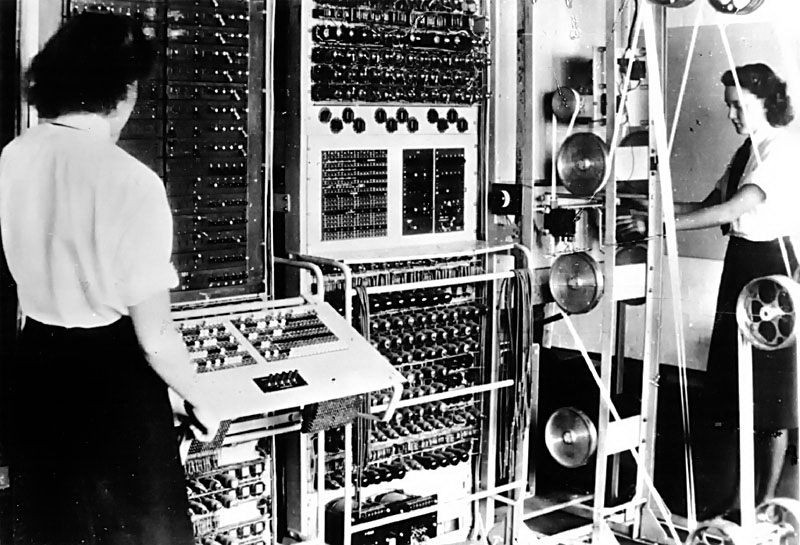Designed by British engineer Tommy Flowers, the Colossus is designed to break the complex Lorenz ciphers used by the Nazis during World War II. A total of ten Colossi were delivered, each using as many as 2,500 vacuum tubes. A series of pulleys transported continuous rolls of punched paper tape containing possible solutions to a particular code. Colossus reduced the time to break Lorenz messages from weeks to hours. Most historians believe that the use of Colossus machines significantly shortened the war by providing evidence of enemy intentions and beliefs. The machine’s existence was not made public until the 1970s.
Conceived by Harvard physics professor Howard Aiken, and designed and built by IBM, the Harvard Mark 1 is a room-sized, relay-based calculator. The machine had a fifty-foot long camshaft running the length of machine that synchronized the machine’s thousands of component parts and used 3,500 relays. The Mark 1 produced mathematical tables but was soon superseded by electronic stored-program computers.

